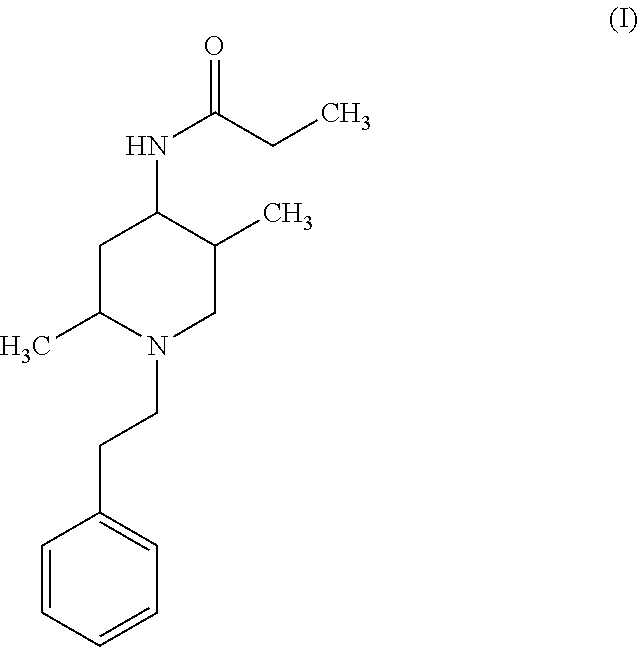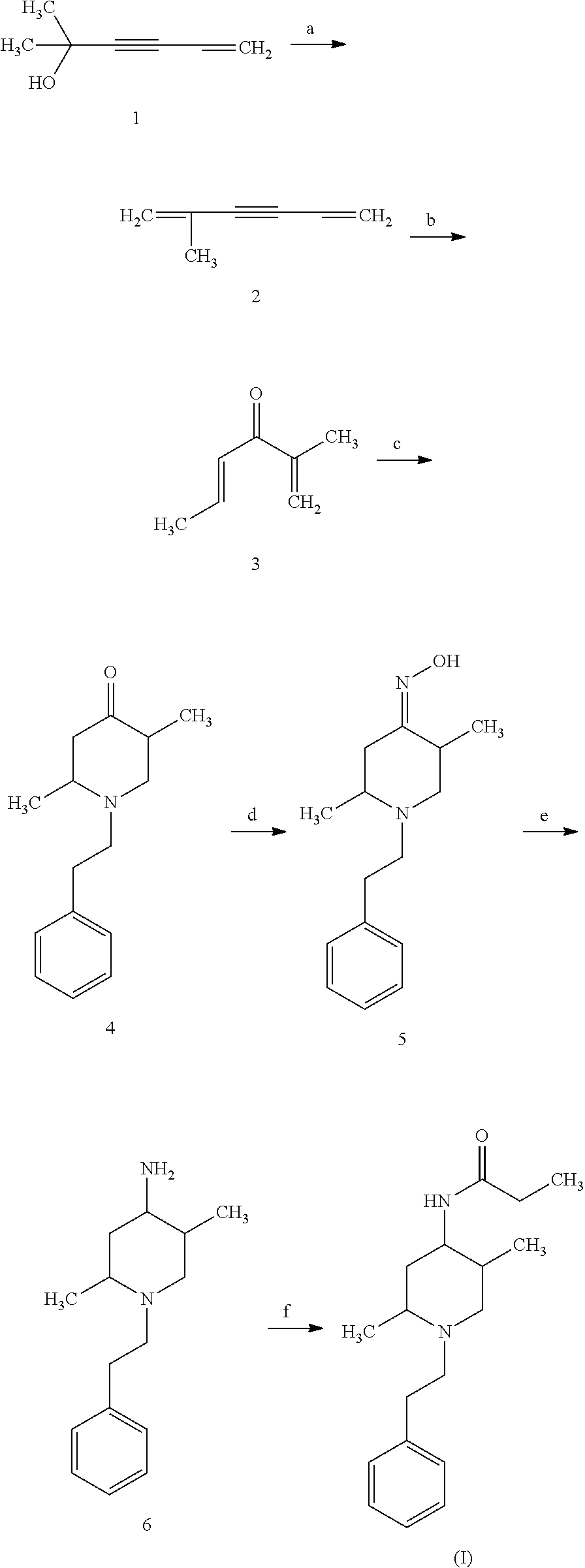Opioid antagonist compounds and methods of making and using
a technology of opioid antagonists and compounds, applied in the field of pharmaceutical chemistry, can solve the problems of people who do not react well to naloxone, poison became the leading cause of injury death, etc., and achieve the effect of reducing the craving for alcohol and increasing blood pressur
- Summary
- Abstract
- Description
- Claims
- Application Information
AI Technical Summary
Benefits of technology
Problems solved by technology
Method used
Image
Examples
example 1
on of Vinilisopropenilacetilen (2) from Dimethyl(Vinyl)Ethynylcarbinol (1)
[0045]
[0046]A stirred solution of 100 G 50% H2SO4 was cooled to 10° C. To this solution was added dropwise 100 G of Dimethyl(vinyl)ethynylcarbinol (1) over 30 minutes. The reaction mixture was then stirred for 4 hours at 60-65° C., after which the reaction mixture was cooled. The organic phase was separated from the reaction mixture and purified by vacuum distillation at 70-75° C. (20 mm) to give 80 G (73%) of Vinilisopropenilacetilen (2).
example 2
on of 2-Methyl-hexan-1,4-dien-3-one (3) from Vinilisopropenilacetilen (2)
[0047]
2-Methyl-hexan-1,4-dien-3-one (3)
[0048]73 G (0.79 mol) of Vinilisopropenilacetilen (2), as prepared in Example 1, was mixed with 200 ml of methanol and 30 ml of 5% H2SO4 at 60-65° C. The mixture was then added to 3 G HgSO4. The solution was stirred at 60-65° C. for 5 hours. The mixture was then allowed to stir at room temperature for an additional 3 hours. Saturated NaHCO3 solution was added. The methanol was then evaporated by vacuum. The resulting residue was extracted with EtOAc, washed with water, dried using Na2SO4, and concentrated. The crude residue was purified by vacuum distillation at 90-95° C. (7 mm) to give 79 G (91%) of 2-Methyl-hexan-1,4-dien-3-one (3).
example 3
on of 1-(2-phenyletyl-2,5-dimethyl-4-piperidone (4) from 2-Methyl-hexan-1,4-dien-3-one (3)
[0049]
1-(2-phenyletyl-2,5-dimethyl-4-piperidone (4)
[0050]79 G (0.72 mol) of 2-Methyl-hexan-1,4-dien-3-one (3), as prepared in Example 2, was mixed with 200 ml methanol and was cooled to 10-15° C. To this solution was added dropwise 87 G (0.72 mol) of phenylethyl amine over 45 minutes. The reaction mixture was stirred for 18 hours at room temperature. The methanol was then evaporated in vacuum. The crude product was purified by column chromatography on silica gel (eluting with EtOAc / Hexane) to give 65 G of the compound of 1-(2-phenyletyl-2,5-dimethyl-4-piperidone (4) (yield 39%). The melting point will be between about 79-80° C.
PUM
| Property | Measurement | Unit |
|---|---|---|
| Mass | aaaaa | aaaaa |
| Mass | aaaaa | aaaaa |
| Mass | aaaaa | aaaaa |
Abstract
Description
Claims
Application Information
 Login to View More
Login to View More - R&D
- Intellectual Property
- Life Sciences
- Materials
- Tech Scout
- Unparalleled Data Quality
- Higher Quality Content
- 60% Fewer Hallucinations
Browse by: Latest US Patents, China's latest patents, Technical Efficacy Thesaurus, Application Domain, Technology Topic, Popular Technical Reports.
© 2025 PatSnap. All rights reserved.Legal|Privacy policy|Modern Slavery Act Transparency Statement|Sitemap|About US| Contact US: help@patsnap.com



